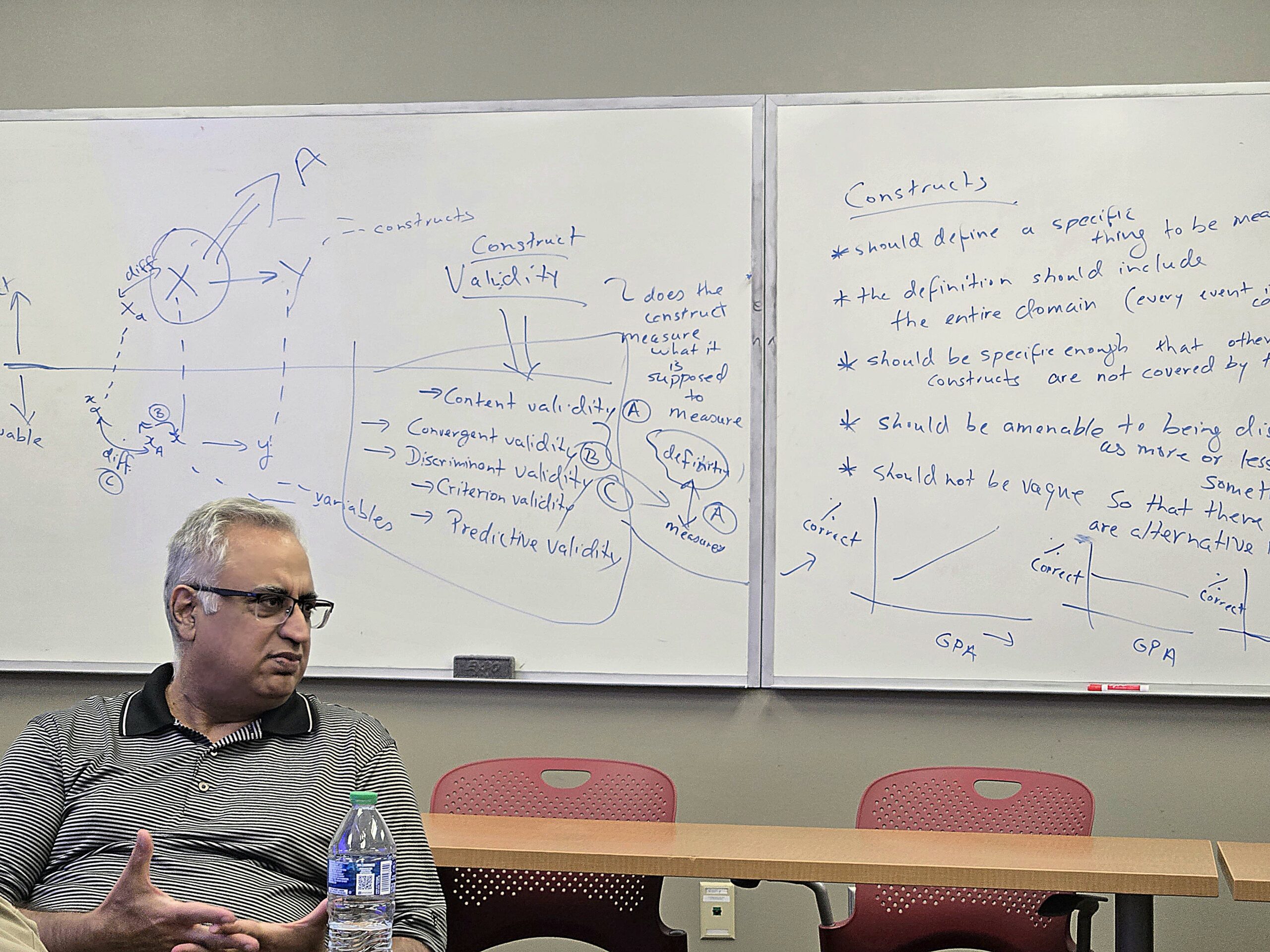Think of a Construct like a “Category of Measurement” for a group of similar things. Let me break this down with some real-world examples:
SMARTPHONE EXAMPLE:
Instead of looking at just your phone’s battery life
We look at “Battery Life” as a general feature of ALL smartphones
This is a construct because:
- It applies to all smartphones (a class of things)
- It’s a specific feature we can measure
- It’s clearly connected to smartphones (not floating randomly)
STUDENT EXAMPLE:
- Instead of just looking at Jane’s test score
- We look at “Academic Performance” for all students
This construct:
- Applies to all students (the class of things)
- Is something we can measure
- Is clearly tied to students
WHY THIS MATTERS:
It’s like Creating Recipe Instructions:
You need to be clear about:
- WHAT you’re measuring
- WHO/WHAT you’re measuring it for
- HOW you’ll measure it
Real-World Example: “Customer Satisfaction”
First, Define What You’re Looking At:
- Not: “Bob likes this restaurant”
- But: “Customer satisfaction with restaurants”
Be Clear About What You’re Measuring:
- Not: “Customers feel good”
- But: “Rating on a 1-5 scale for food quality, service speed, and cleanliness”
Make Sure It’s Connected:
- The satisfaction ratings must clearly relate to restaurant experiences
- Not random feelings about their day
Common Mistake Example:
❌ Bad Construct: “People’s Goodness”
- Too vague
- Not clearly defined
- Can’t be measured reliably
✅ Better Construct: “Individual’s Charitable Giving Behavior”
- Clear group (individuals)
- Clear attribute (charitable giving)
- Can be measured (amount donated, frequency of donations)
Think of it Like Building Blocks:
First, Pick Your Group:
- Like “Smartphones” or “Students” or “Restaurants”
Then, Pick What You Want to Measure:
- Like “Battery Life” or “Academic Performance” or “Customer Satisfaction”
Make Sure You Can Actually Measure It:
- Like “Hours of use per charge” or “Test scores” or “Star ratings”
The Key Points:
Be Specific:
- Don’t just say “quality” – quality of what?
- Don’t just say “performance” – performance in what?
Make it Measurable:
- You need to be able to actually measure it somehow
- Like using surveys, tests, or direct measurements
Keep it Connected:
- Every measurement must clearly belong to something
- Like how “speed” must be connected to a moving object










Leave a Reply